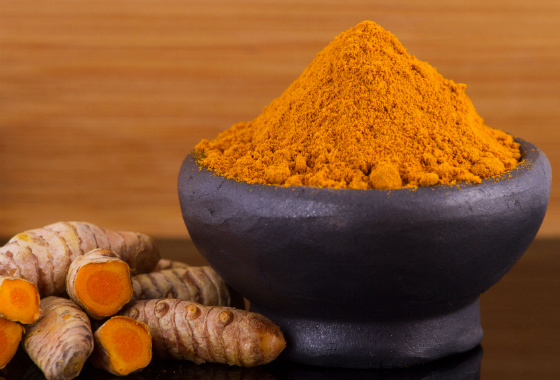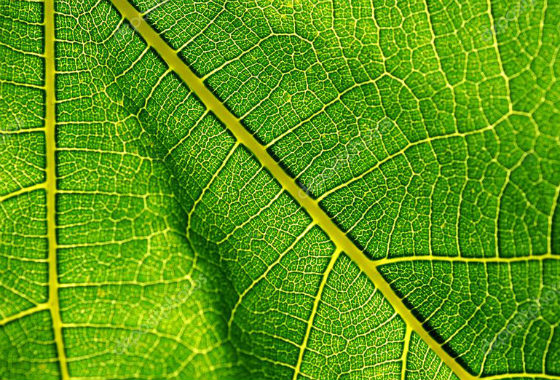Callbcack
Nikolay Petrovich Lysenko, Alexander Vladimirovich Pozdeev, Fedor Ivanovich Vasilevich, Viktor Borisovich Chernetsov, Larisa Vasilvyevna Rogozhina, Mikhail Vasilyevich Shchukin, Ivan Igorevich Kovalev, Leonid Alexandrovich Romodin, Tsydendamba Tsyrendashievich Sodboev
Federal State Budgetary Educational Institution of Higher Education “K.I. Skyabin Moscow State Academy of Veterinary Medicine and Biotechnology”, Department of Radiobiology and Virology named after Academicians A.D. Belov and V.N. Syurin of the Russian Academy of Agricultural Sciences, Moscow, Russia
Key Words:
Curcumin; turmeric; active forms of oxygen; ionizing radiation; γ-rays; external exposure; radioprotectors; lethal doses of ionizing radiation; mice; lipid peroxidation; blood test; phyto-preparation
Abstract
This paper presents results of study of radioprotective properties of curcumin which is a polyphenol found in the root of Curcuma longa, in terms of its capacity to protect an organism against external exposure to γ-rays. We used a γ-ray therapy unit with standardized 137Cs as the source of γ-radiation. In the process of this study conducted on mice Mus musculus the preparation was administered by intramuscular injection before exposure to some animal groups, after exposure to other animal groups, and before and after exposure to yet another animal group.
The survival rate after exposure to γ-radiation in doses much higher that lethal ones in groups of mice which received a curcumin-based preparation was much higher than this rate in the control group. Furthermore, in curcumin-treated groups we observed leveling of lipid peroxidation processes triggered by radiation, which were assessed by malondialdehyde concentration. We obtained conclusive evidence of inhibitory effects of curcumin on both ascorbate-dependent and NADPH-dependent lipid oxidation. The preparation we used facilitated normalization of hematological parameters such as red blood cell (RBC) and white blood cell (WBC) counts and hemoglobin levels.
Thus, we obtained conclusive evidence of the fact that curcumin is highly efficient as a radioprotector and, therefore, it should be studied comprehensively in terms of its capacity to protect an organism against ionizing radiation, and utilized in commercial production. It should be emphasized that this agent is non-toxic. The conclusions made in this paper are topical in view of the ever increasing risk of accidents at nuclear power plants, the high probability of environmental pollution with radioactive waste, and the threat of military use of nuclear weapon, which still exists globally.
Abbreviations: MDA ‒ malondialdehyde; NADPH ‒ reduced nicotinamide adenine dinucleotide phosphate; LPO – lipid peroxidation; ARS – acute radiation syndrome; DMF ‒ dose-modifying factor
INTRODUCTION
The risk of radiation pollution of our environment is still rather high. This risk stems not only from nuclear weapon testing or a possibility of its military use, but also from probable accidents at nuclear power plants and facilities and from an ever growing amount of radioactive waste. Thus, the risk of radiation injury for humans and animals is growing higher year by year. Therefore, development of measures and discovery of ways to eliminate consequences of nuclear pollution of the environment has become one of the major tasks of the world science. In terms of medicine, i.e. wellbeing of individuals, development of new radioprotectors and investigation of mechanisms of their effects on various systems of organs in an organism or evaluation of their safety in terms of toxicity is a topical issue. This paper provides findings of a study showing effects of a curcumin-based preparation on parameters reflecting lipid peroxidation activity, including blood and liver malondialdehyde (MDA) concentration and intensity of NADPH-dependent and ascorbate-dependent lipid peroxidation (LPO) after radiation exposure, and hematological parameters (hemoglobin level and red blood cell (RBC) and white blood cell (WBC) counts).
SUBJECT AND METHODS
We used outbred mice Mus musculus (body mass 18 to 20 g) as our experimental models. In our experiments we used curcumin manufactured of raw plants by “Limex-Farma” LLC (Moscow, Russia). A 5% curcumin preparation was diluted in saline solution in concentrations 1:2, 1:3, 1:8, and 1:10. Before use we filled 20 ml vials with the curcumin preparation and added streptomycin sulfate for the purpose of sterilization.
Methods of study of effects of the curcumin-based preparation on survival of mice exposed to γ-radiation
Methods of evaluation of lipid peroxidation (LPO) and blood parameters after radiation exposure on the background of administration of the curcumin-based preparation.
RESULTS AND DISCUSSION
Evaluation of antiradiation effects of a curcumin plant preparation in terms of increase in the survival rate among laboratory animals.
Parameters in those groups which received the preparation came back to normal by the 30th day. When the curcumin-based preparation was administered, lymphocyte percentage in the group “Administration before exposure” was conclusively higher at the 1st, 14th and 21th day than that percentage in the group “Administration after exposure” (50.50% and 45.33%; 34.00% and 28.67%; and 48.83% and 40.00%).
Thus, the curcumin-based preparation administered either before or after radiation exposure evidently increased lymphocyte percentage in the experimental groups in comparison to the group “Exposed control”. Administration of the preparation before radiation exposure proved to be more efficient in increasing lymphocyte percentage than its administration after exposure.
CONCLUSIONS
The natural curcumin-based preparation we studied proved to be highly effective as a radioprotector. Intramuscular administration of 0.74% curcumin preparation in a dose of 0.2 ml (77.5 mg of pure substance per kg body weight) 10‒15 minutes before radiation exposure in a dose of 5 Gy, immediately after such exposure, and before and after such exposure increased survival rate and life expectancy in experimental mice in comparison to control animals when the mice were exposed to γ-radiation in the lethal and superlethal dose. The dose-modifying factor (DMF) is 2.
This study revealed that the curcumin based preparation had protective effects on blood parameters of animals, inhibited lipid peroxidation processes in blood and liver tissues, and leveled effects of γ-radiation on systemic status of experimental mice. Furthermore, we observed normalization of hematological parameters such as hemoglobin levels and white blood cell and red blood cell counts.
Findings of these experiments show prospects of use and further study of curcumin-based preparations as radioprotectors. Curcumin-based preparations can be utilized in veterinary and medical practices independently, in the form of emulsions, as a preventive medication or a therapy aimed at protection of mammals against radiation.
REFERENCES:
1. Curcumin, compound summary. Available from: https://pubchem.ncbi.nlm.nih.gov/compound/969516.
2. Abrahams S., Haylett W.L., Johnson G., Carr J.A., Bardien S. Antioxidant effects of curcumin in models of neurodegeneration, aging, oxidative and nitrosative stress: A review // Neuroscience / 406, 2019. 1-21.
3. Chan M.M., Huang H.I., Fenton M.R., Fong D. . In vivo inhibition of nitric oxide synthase gene expression by curcumin, a cancer preventive natural product with antiinflamatory propierties // Biohem Pharmacol /, 55, 1998. 1955-1962.
4. Cheng A.L., Hsu C.H., Lin J.K., et al. Phase I clinical trial of curcumin, a chemopreventive preparation, in patients with high-risk or premalignant lesions // Anticancer Res / 21, 2, 2001. 895-900.
5. Jin S., Hong J.H., Jung S., Cho K.H. Turmeric and laurel aqueous extracts exhibit in vitro anti-atherosclerotic activity and in vivo hypolipidemic effects in a zebrafish model // J Med Food / Mar, 14(3), 2011. 247-256.
6. Kawamori T., Lubet R., Steele V.E., et. al. Chemopreventative effect of curcumin, a naturally occurring antiinflammatory preparation, during the promotion: progression stages of colon cancer // Cancer Res /, 59, 1999. 597-601.
7. Kelloff G.J., Crowell J.A., Hawk E.T., et. al. Strategy and planning for chemopreventive drug development: clinical development plans II // J Cell Biochem /, 63, 1996. 54-71.
8. Kucukgoncu S., Guloksuz S., Tek C. Effects of Curcumin on Cognitive Functioning and Inflammatory State in Schizophrenia: A Double-Blind, Placebo-Controlled Pilot Trial // J Clin Psychopharmacol / 39, 2, 2019. 182-184.
9. Mathew D., Nair C.K., Jacob J.A., Biswas N., Mukherjee T., Kapoor S., Kagiya T.V. Ascorbic acid monoglucoside as antioxidant and radioprotector // J Radiat Res / 48, 5, 2007. 369-376.
10. Momeni H.R., Eskandari N. Effect of curcumin on kidney histopathological changes, lipid peroxidation and total antioxidant capacity of serum in sodium arsenite-treated mice // Exp Toxicol Pathol / 69, 2, 2017. 93-97.
11. Naik G.H., Priyadarsini K.I., Naik D.B., Gangabhagirathi R., Mohan H. Studies on the aqueous extract of Terminalia chebula as a potent antioxidant and a probable radioprotector // Phytomedicine / 11, 6, 2004. 530-538.
12. Pan J., He H., Su Y., Zheng G., Wu J., Liu S., Rao P. GST-TAT-SOD: Cell Permeable Bifunctional Antioxidant Enzyme-A Potential Selective Radioprotector // Oxid Med Cell Longev / 2016, 2016. 5935080.
13. Piper J.T., Singhal S.S., Salameh M., Torman R.T., Awasthi Y.C., Awasthi S. Mechanisms of anticarcinogenic properties of curcumin: the effect of curcumin on glutathione linked detoxification enzymes in rat liver // Int J Biochem Cell Biol 30, 1998. 445-456.
14. Rao C.V., Rivenson A., Simi B., Reddy B.S. Chemoprevention of colon carcinogenesis by dietary curcumin, a naturally occurring plant phenolic compound // Cancer Res /55, 1995. 59-66.
15. Shah B.R., Zhang C., Li Y., Li B. Bioaccessibility and antioxidant activity of curcumin after encapsulated by nano and Pickering emulsion based on chitosan-tripolyphosphate nanoparticles // Food Res Int / 89, Pt 1, 2016. 399-407.
16. Sharma R.A., Ireson C.R., Verschoyle R.D., et. al. Effects of dietary curcumin on glutathione S-transferase and malondialdehyde-DNA adducts in rat liver and colon mucosa: Relationship with drug levels // Clin Cancer Res / 7, 2001. 1452-1461.
17. Srinivasan M., Devipriya N., Kalpana K.B., Menon V.P. Lycopene: An antioxidant and radioprotector against gamma-radiation-induced cellular damages in cultured human lymphocytes // Toxicology / 262, 1, 2009. 43-49.
18. Tabrizi R., Vakili S., Akbari M., Mirhosseini N., Lankarani K.B., Rahimi M., Mobini M., Jafarnejad S., et al. The effects of curcumin-containing supplements on biomarkers of inflammation and oxidative stress: A systematic review and meta-analysis of randomized controlled trials // Phytother Res / 33, 2, 2019. 253-262.
19. Tanrikulu-Kucuk S., Basaran-Kucukgergin C., Sogut I., Tuncdemir M., Dogru-Abbasoglu S., Seyithanoglu M., Kocak H., Oner-Iyidogan Y. Dietary curcumin and capsaicin: Relationship with hepatic oxidative stress and apoptosis in rats fed a high fat diet // Adv Clin Exp Med. 2019.
20. Baranov A.E. [Estimation of the Dose and Forecasting Dynamics of Neutrophil Count in Peripheral Blood by Hematological Parameters of Exposure of Humans to Gamma Radiation]. Medical Radiology. No.8, 1981. P. 11‒16.
21. Belov A.D., Kirshin V.A. [Veterinary Radiobiology]. Moscow: Agropromizdat, 1987. P. 287.
22. Belousova O.I., Gorizontov P.D., Fedotova M.I. [Radiation and Hemic System]. Moscow: Atomizdat, 1979. 128 p.
23. Gavrilov V.B., Gavrilova A.R., Mazhul L.M. [Analysis of Methods of Detection of Lipid Peroidation Products in Blood Serum Using the Thiobarbituric Acid Test]. Issues of Medical Chemistry. No.1, 1987. P. 118‒122.
24. Goncharenko E.N., Kudryashov Y.B. [Chemical Protection aggainst Radiation Injury]. Moscow: Publishing House of Moscow University, 1985. 248 p.
25. Zherbin E.A., Chukhlovin A.B. [Radiation Hematology]. Moscow: Medicina, 1989. 176 p.
26. Koggl J. [Biological Effects of Radiation: translated from English]. Moscow: Energoatomizdat, 1986. 184 p.
27. Kolomiytseva I.K. [Radiation Biochemistry of Membrane Lipids]. Moscow: Nauka, 1989. 181 p.
28. Panchenko L.F., Archakov A.I., Aleksandrova T.A. [Studying Peroxidation of Unsaturated Fatty Acids of Blood Lipids in Rat Liver Microsomes]. Issues of Medical Chemistry. Issue 5, 1969. P. 494‒500.
29. Smolyanitsky A.Y. [Laboratory Study Methods in Clinics: Handbook]. Edited by V.V. Menshikov. Moscow: Medicina, 1987. P. 149‒172.
30. Stalnaya I.D., arishvili T.G. [A Method of Detection of Malondialdehyde Using Thiobarbituric Acid]. Up-to-Date Methods in Biochhemistry. Moscow, 1977. P. 66‒68.
31. Stroev E.A., Makarova V.G. [Practical Course of Biological Chemistry]. Moscow: Vysshaya Shkola, 1986. 232 p.
32. Tarusov B.N. [Primary Processes during Expposure to Ionizing Radiation]. Primary Processes of Radiation Injury. Moscow, 1957. P. 3‒29.
33. Shcherbova E.N., Gruzdev G.P. [Analysis of Dynamics of Regeneration of Neutrophils in Peripheral Blood in Radiation Injury]. Radiobiology. Issue 2, 1977. P. 231‒236.
34. Yarmonenko S.P. [The Human and Animal Radiobiology]. Moscow: Vysshaya Shkola, 1988. 424 p.
35. Yarmonenko S.P., Vaynson A.A. [The Human and Animal Radiobiology]. Moscow: Vysshaya Shkola, 2004. 549 p.


